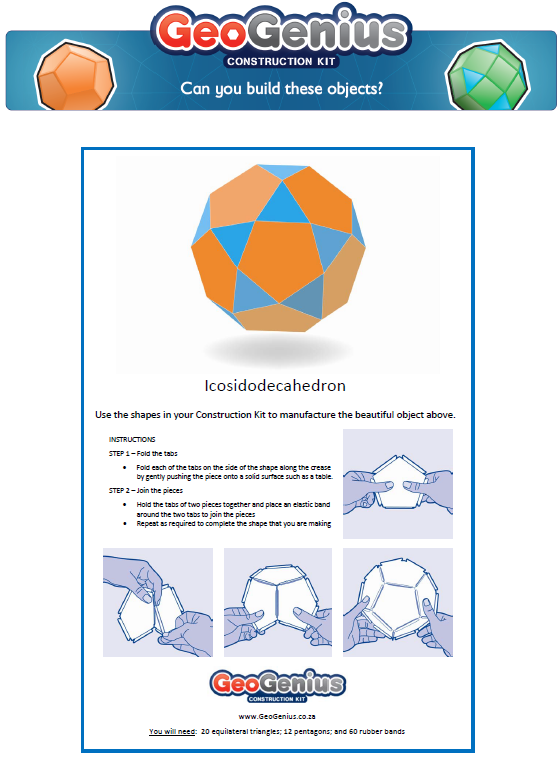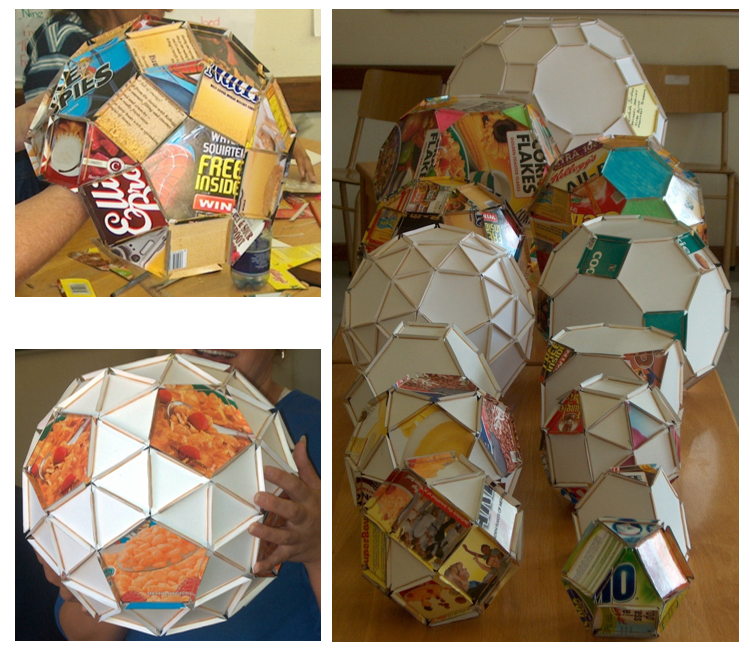We have names for different families of objects. Below is a guide explaining Prisms, Pyramids and Antiprisms. Using this guide and your GeoGenius Construction Kit pieces, make as many prisms, pyramids and antiprisms as you can.
Prisms
PRISM is the name given to an object with identical parallel polygon bases and other faces made of parallelograms. If the sides of the prism are made using a rectangle, the prism is called a rectangular prism. The GeoGenius Construction Kit can be used to make rectangular prisms. The four rectangular prisms are called (clockwise from top left):

- triangular-based prism
- square-based prism
- hexagonal-based prism
- pentagonal-based prism
The name of a prism is determined by the name of the shape of the base.
Pyramids
PYRAMID is the name given to an object with a polygonal base whose other faces are all triangles which meet at a point called the apex. If the apex of the pyramid is above the centre of the base, the pyramid is called a right pyramid.

The GeoGenius Construction Kit can be used to make right pyramids. The four right pyramids are called (clockwise top left):

- triangular-based pyramid
- square-based pyramid
- hexagonal-based pyramid
- pentagonal-based pyramid
The name of a pyramid is determined by the name of the shape of the base.
Antiprisms
ANTIPRISM is the name given to an object with identical parallel polygonal bases joined by an alternating band of triangles. The GeoGenius Construction Kit can be used to make antiprisms. The four rectangular antiprisms are called (clockwise from top left):

- triangular-based antiprism
- square-based antiprism
- hexagonal-based antiprism
- pentagonal-based antiprism
The name of a prism is determined by the name of the shape of the base.









 Follow the images provided in the handout to guide you in constructing your own objects.
Follow the images provided in the handout to guide you in constructing your own objects.




